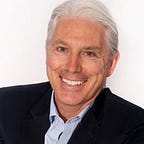Do we have the right strategy?
I met a founder recently who asked me how to go about evaluating their current strategy and if an alternative strategy would be a better place for them to take the business.
I liked this question as it is my belief that in Strategy there are no absolute answers or sure things, and nothing lasts forever. And as I told her it is good to do an assessment of your strategy on a regular formalized basis.
Is it a Strategy or a Plan?
After determining that the desire was to evaluate an actual strategy and not a resource allocation plan (the difference of which I’ve written about here), we advanced our discussion. Their current strategy is based on a strong purpose/aspiration, defined strategic domain, competitive advantage, required capabilities and the management system to support measure and structure.
For me, the starting point of evaluating her current strategy is the set of choices they have already made and the corresponding “truths” that would need to be realized to produce their desired outcomes. Those choices had a logic behind them, whether somewhat implicit or highly explicit. There was a reason why they chose to do specific things and not some other things. That set of choices was meant to intersect with the world to produce a desired outcome.
What is driving the evaluation?
If the desired outcome is being achieved, then it is likely that the strategy thinking process will reaffirm those choices. It is quite conceivable that the existing choices produced the desired outcomes to date, but the leadership team might be worried about the match of those choices to future conditions.
If the desired outcome is not being achieved, then the thinking effort will need to contemplate new choices. That contemplation is driven most by the mismatch between the desired outcomes of the existing choices and actual outcomes.
So, in my conception of the strategy thinking process, the best — and only useful — starting place for strategy is the mismatch of the desired outcomes of your historical choices with the actual outcomes.
Reverse Engineer the logic of your choices
Go back to the logic of your chosen strategy and assess the data that the world has produced since you made the choice, using reverse-engineering on the logic used in determining what would need to happen as it relates to Industry, Customer Value, Relative Position and Competition.
To the extent that your assumptions are no longer true, or potentially ever were, it is time to revisit your strategy. In my experience, often only a tweak is required — e.g., we had customer value nearly correct, but our offer needs to be tweaked within the construct of the current strategy. Or a new competitor that was not anticipated has entered and we need to improve our capabilities to achieve the competitive position that we sought.
However, sometimes the competitive environment has evolved to such an extent that the desired truths just aren’t collectively close enough to being true for the strategy to have a chance of working. Then the only choice is to take a fundamentally fresh look at a new set of strategy possibilities to come up with a new set of fact based assumptions that you feel confident that you can make true.
Strategy is about shortening your odds
For any company, there are many possible strategic choices that could be selected from an infinite amount of data that can be crunched, and a wide array of strategic tools that might be brought to bear on the problem. It can be overwhelming, even paralyzing.
Challenge the assumptions behind the logic of your strategy — particularly around the strategic domain, competitive advantage and required capabilities — regularly . Continually test whether your work combined with the evolution of the world is producing outcomes that are consistent with your assumptions. If they are: power forward. If they aren’t, start reviewing and revising your strategy immediately to give yourself the best chance of rejuvenating your strategy before its fatal flaws become evident.
In the end, building a strategy isn’t about achieving perfection; it’s about shortening your odds.
Thanks for reading. I’m John McAuliffe and I help companies accelerate growth more consistently and with greater predictability. I do this by facilitating and coordinating the creation of strategy, ensuring the consistency of strategy and using repeatable processes.
I am a learner. I find myself constantly reading on a variety of topics with an insatiable appetite for continuous learning. My thoughts on business have been influenced by many. You may feel a bit of déjà vu in reading some of my thoughts because of this. When it comes to strategy and business management systems I follow the likes of Jim Collins, Roger Martin, Gino Wickman, Verne Harnish amongst others. On consumer insights, marketing and sales I am influenced by the likes of Adele Revella, John McMahon, Geoffrey Moore and many others. Thanks for reading.
